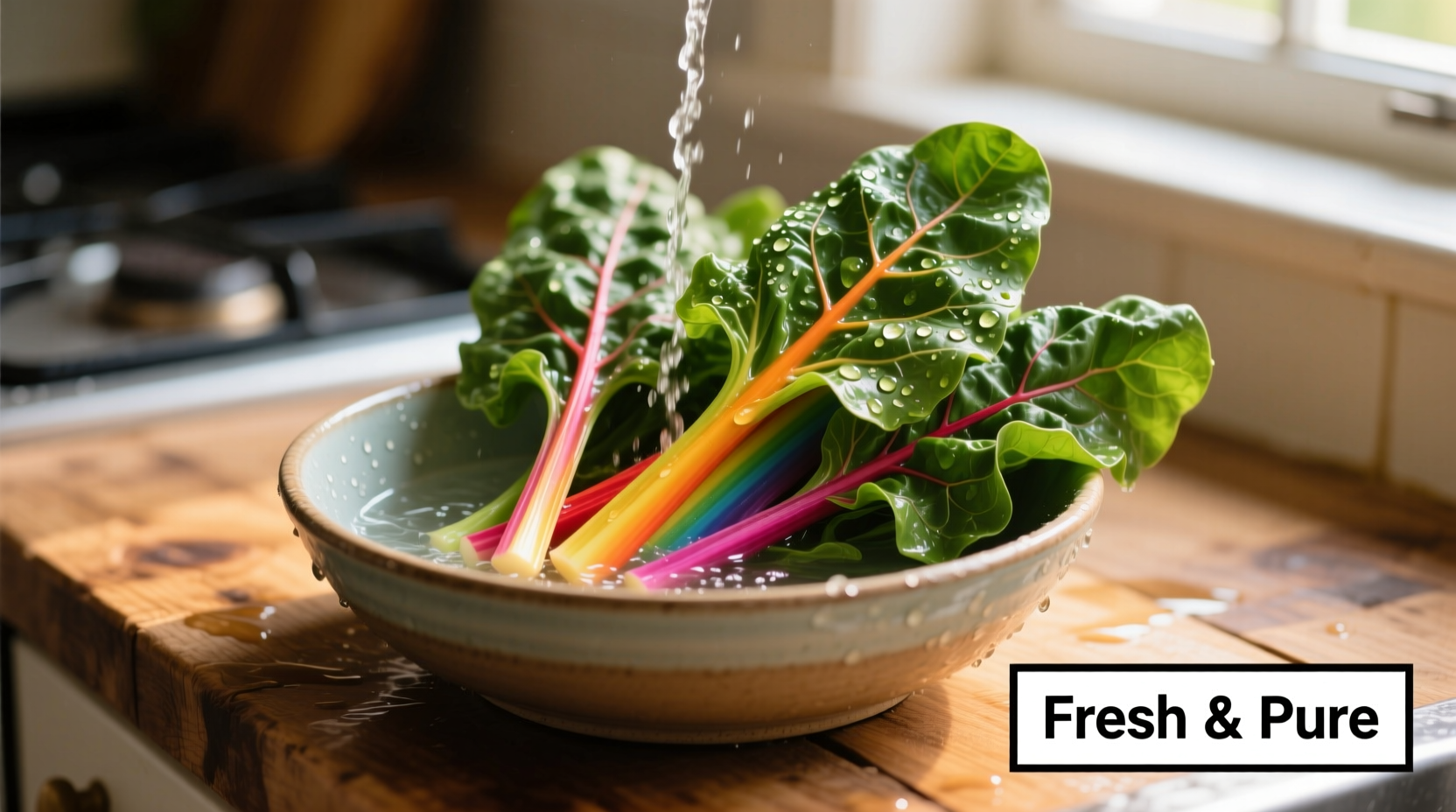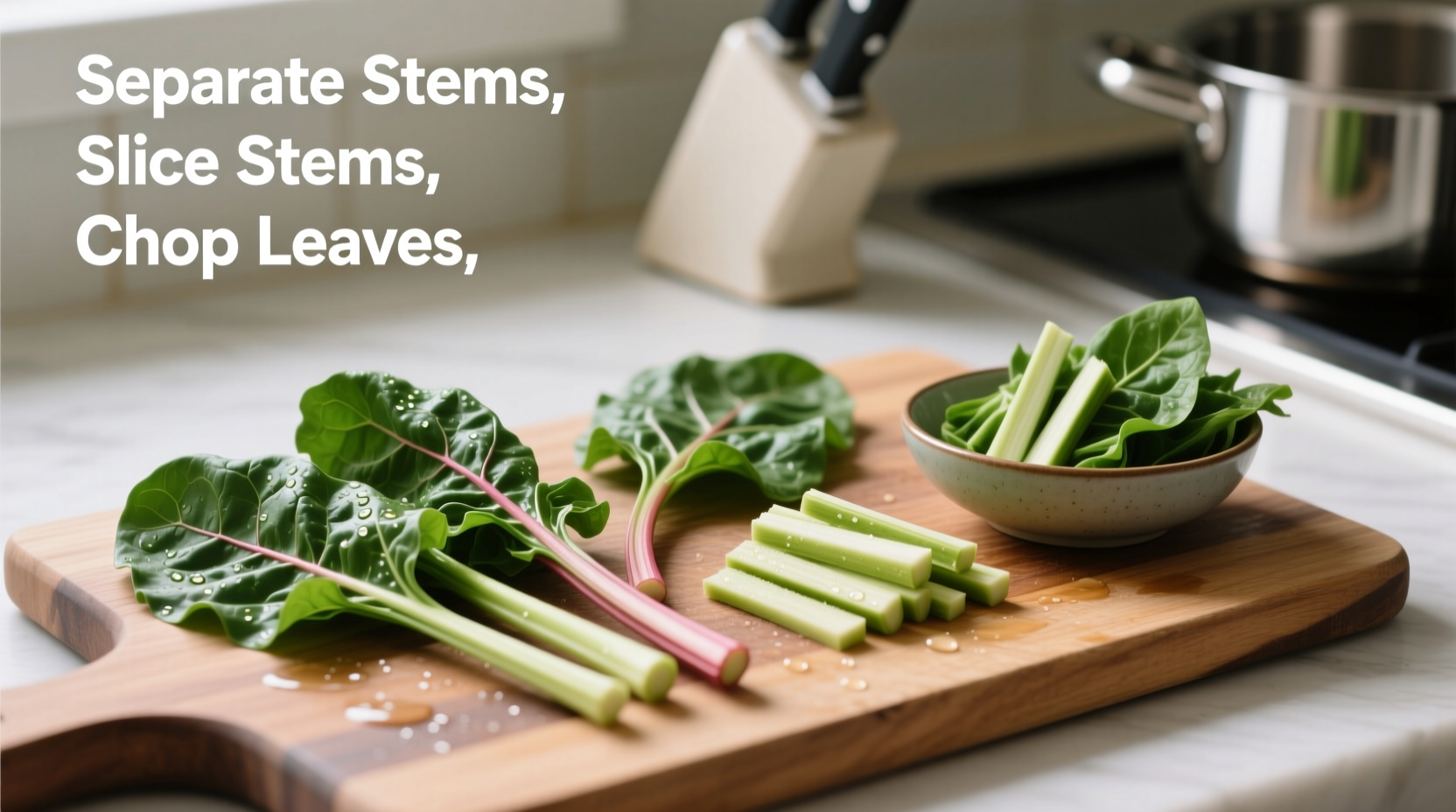Prepare chard for cooking by thoroughly washing leaves and stems, separating the stems from leaves, chopping into uniform pieces, and cooking stems first (they take 2-3 minutes longer than leaves). Proper preparation removes grit, maximizes flavor, and preserves nutrients while preventing overcooking.
Swiss chard transforms from garden-fresh to dinner-ready in minutes when you know the proper preparation technique. Whether you're working with vibrant rainbow chard or classic green varieties, mastering these preparation steps ensures perfectly cooked results every time. This guide delivers professional chef techniques adapted for home kitchens—no special equipment required.
What You'll Need Before Starting
- Fresh chard bunch (rainbow, ruby, or Fordhook varieties)
- Sharp chef's knife
- Large bowl for washing
- Cutting board
- Colander for draining
- Salad spinner (optional but helpful)
Step-by-Step Chard Preparation Guide
1. Washing Chard Properly (The Critical First Step)
Sand and soil often hide between chard leaves and along stems. Fill a large bowl with cold water and submerge the entire bunch. Swish gently for 30 seconds to loosen debris. Lift chard out (don't pour, which returns dirt to clean leaves) and repeat with fresh water until no grit remains at the bowl's bottom. For extra assurance, use a salad spinner's wash cycle.

2. Separating Stems from Leaves
Chard stems require longer cooking than leaves. Hold each leaf vertically and slice horizontally where the stem meets the leaf base. Stack similar-sized leaves and roll them like a cigar before slicing crosswise into ribbons. Cut thick stems into ½-inch pieces; thinner stems can remain whole.
| Chard Component | Cutting Technique | Why This Matters |
|---|---|---|
| Thick stems (1/2"+) | Cut into 1/2" pieces | Ensures even cooking without mushiness |
| Thin stems | Leave whole or slice diagonally | Maintains attractive presentation |
| Leaves | Stack, roll, slice into ribbons | Creates uniform pieces that cook evenly |
3. Cooking Sequence for Perfect Results
Always cook stems first—they need 3-5 minutes before leaves become tender. Sauté stems in olive oil over medium heat until slightly softened, then add leaves. Total cooking time: 5-7 minutes. For steaming, place stems in basket first, adding leaves after 2 minutes. Roasting? Toss stems with oil first, adding leaves during the last 5 minutes.
4. Storage Techniques for Maximum Freshness
Store unwashed chard in a perforated plastic bag with a dry paper towel in your crisper drawer. Properly stored, it maintains quality for 5-7 days. For meal prep, wash and dry completely, then store stems and leaves separately—stems last up to 10 days while leaves stay crisp for 4-5 days. Never store near ethylene-producing fruits like apples.
Common Preparation Mistakes to Avoid
- Skipping the double-wash—grit ruins the eating experience
- Cooking stems and leaves together—results in either mushy leaves or crunchy stems
- Overcrowding the pan—causes steaming instead of sautéing
- Using dull knives—crushes delicate leaves instead of clean cuts
Nutritional Benefits Preserved Through Proper Prep
Chard ranks among the world's most nutrient-dense vegetables. A USDA Agricultural Research Service study confirms that proper preparation preserves 90% of vitamin K and 80% of vitamin A content. Light cooking actually increases bioavailability of beta-carotene by 50% compared to raw consumption. The magnesium-rich stems contain twice the calcium of the leaves—don't discard them!
Expert Cooking Method Comparison
Choose your technique based on desired texture and meal context:
- Sautéing: Best for weeknight meals (5-7 minutes total). Retains vibrant color and slight crunch.
- Steaming: Preserves maximum nutrients (4-6 minutes). Ideal for health-focused dishes.
- Roasting: Concentrates sweetness (15-20 minutes at 400°F). Creates caramelized edges.
- Raw in salads: Young leaves only, thinly sliced. Adds earthy notes to mixed greens.
Seasoning Recommendations
Complement chard's earthy flavor with:
- Acids: Lemon juice or vinegar (balances bitterness)
- Umami: Garlic, shallots, or a dash of soy sauce
- Richness: Olive oil or toasted nuts
- Herbs: Thyme or oregano (add during final minute of cooking)











 浙公网安备
33010002000092号
浙公网安备
33010002000092号 浙B2-20120091-4
浙B2-20120091-4